- How to Propagate Monstera Guide: The Three Ways to Succeed - September 17, 2021
- Escargot Begonia: Why Is The Rex Begonia So Rare? - August 31, 2021
- Rieger Begonia: When You Can Expect The Hiemalis Begonia To Flourish - August 31, 2021
As part of the Peperomia plant family, this variety is suitably designed for use as a houseplant. Peperomia Puteolata is cute, it is compact, it is unfussy, and it is not toxic to family pets or small children. This is an ideal plant for gardeners of all skill levels and schedules.
Whether you are new to plants, an experienced expert, or extraordinarily busy with all facets of life, Parallel Peperomia is going to be a wonderful fit for your home or garden space.
How to Identify Parallel Peperomia
This is not a plant with highly distinctive features, like a Pink Princess Philodendron, but its quaint features are still attractive. When you look to identify a Parallel Peperomia, these are the features you should find:
- Long and narrow leaves that are oblong shaped
- Leaves with light green or silvery colored lines that run parallel to each other from tip to tip
- Stiff red stems that tend to grow upward
How to Grow Parallel Peperomia from Seeds
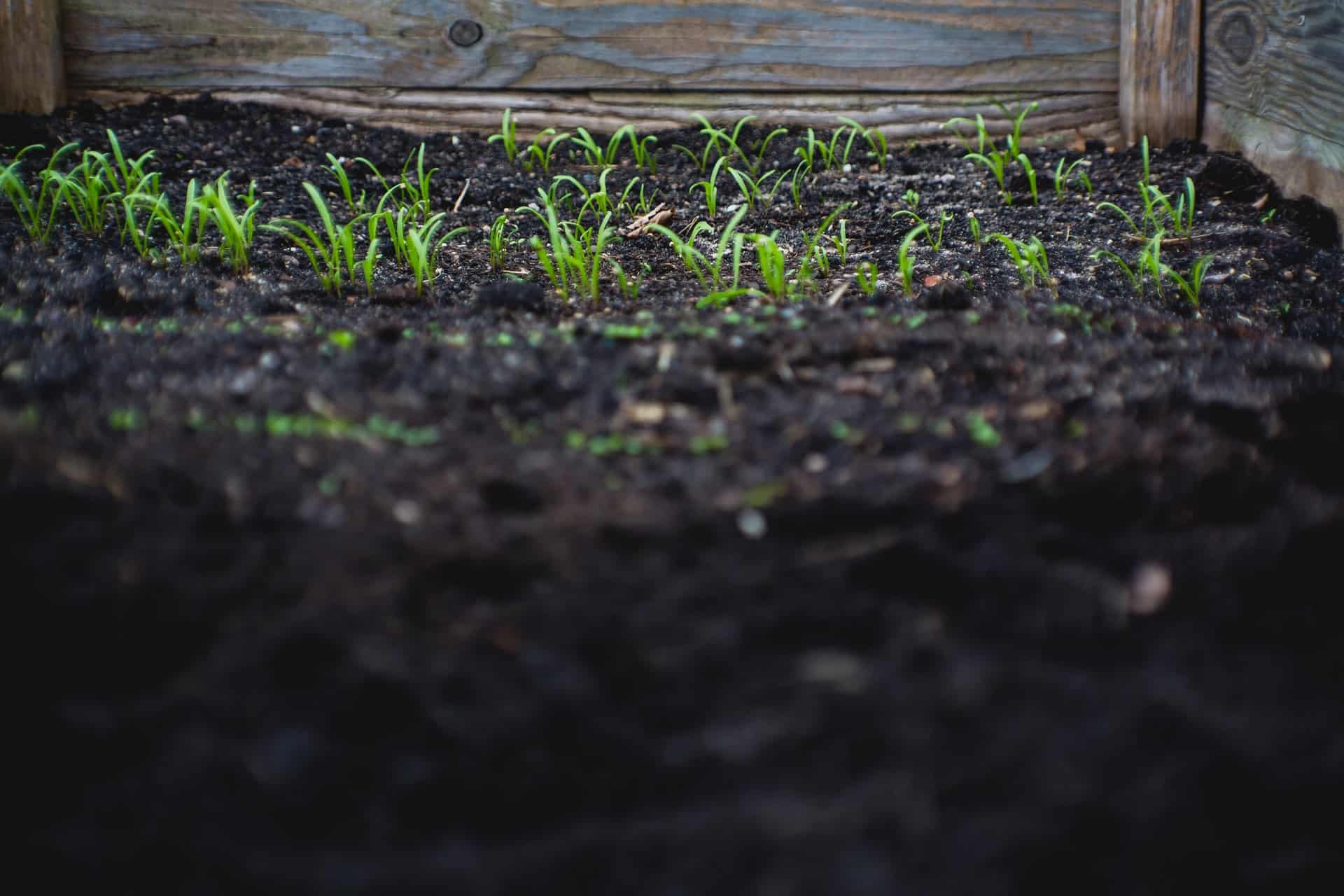
Peperomia plants take a long time to grow from seeds, and consequently, most gardeners do not prefer this method for growing one of these plants. But, this does not mean that you should not try. If you are determined to grow one of these via seeds, follow these steps:
- Purchase seeds from a reputable seller (sellers who price their seeds between $1 and $2)
- Fill a container with a soilless seed starting mix
- Plant the seeds in the seed starting mix
- Water the mix so that it is moist but not soggy
- Place plastic wrap over the top of the container
- Set the container in a warm spot that gets plenty of bright, indirect sunlight
- Once sprouts appear, transplant the seeds to a container filled with soil that has a pH level between 6 to 6.5
How to Propagate Parallel Peperomia
Two propagation methods are preferred over and above planting seeds. These methods are leaf cuttings and plant division. Both methods are simple and straightforward processes that can be done during spring pruning sessions or whenever you feel that it’s time for your plant to be repotted.
The Leaf Cutting Method:
- Clean a pair of scissors or another type of cutting utensil
- Cut off a healthy leaf that includes a petiole
- Set the leaf out for a few days to allow it to callus
- Fill a plant container with well-draining soil that includes 50% peat and 50% perlite
- Dip the end of the leaf in a rooting hormone
- Stick the bottom of the leaf into the soil
- Select a warm spot where the plant can receive plenty of indirect or filtered sunlight
- When the top layer of its soil is dry, give the plant some water
The Plant Division Method:
- Gently remove the plant from its container
- Carefully remove excess dirt from the roots (try to not touch the roots a lot)
- Use a clean cutting utensil to separate stems and roots
- Repot each section in fresh potting soil
- Select a warm spot where the plant can receive plenty of indirect or filtered sunlight
- When the top layer of its soil is dry, give the plant some water
Parallel Peperomia Growing Conditions
Since this is a tropical plant, they should not be exposed to cold temperatures at all. Even cold drafts can cause this type of plant to go into shock, so be very careful where you place your Parallel Peperomia.
Plan to set your Peperomia in a spot that is away from vents and doors and has temperatures ranging between 65 and 75 degrees Fahrenheit. While this plant does like high humidity levels of at least 40%, it can survive in regular household humidity as long as it gets some moisture on extra dry summer days.
To provide extra heat and humidity to your plant, you can purchase a Pebble tray or a Plant humidifier and a Plant Heat Mat. These technologies allow you can keep your plant comfy and cozy while not getting stuffy and sticky in your own home.
How to Plant Parallel Peperomia
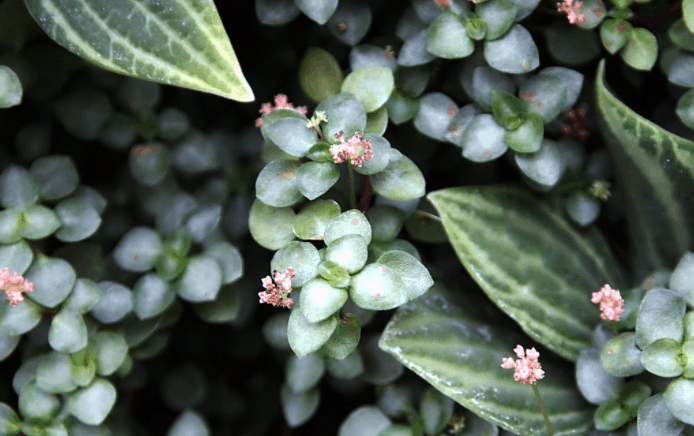
This Peperomia variety does not need to be replanted very often because it does not mind being tight and cozy in its plant container. Even though it enjoys the coziness of a tight plant container, it is still beneficial to repot these plants every two to three years. Repotting it will provide it with new soil that contains fresh nutrients and this process will help keep the pot clean so that the risk of pest infestations and diseases is reduced.
Keep an eye out for the following signs to know whether or not your plant needs repotted before two to three years has passed:
- Compacted Soil
- Roots that are crowded and growing into a ball formation
- A plant that looks too big for its current container
When it comes time to repot your Parallel Peperomia, follow these steps:
- Fill a container with potting soil (if the plant has outgrown its current container, choose a new container that is two inches larger in diameter)
- Create a hole in the soil for the plant to set inside
- Carefully remove the plant from its current container
- Gently dust off any excess soil from its roots
- Set the plant into the hole in the new container
- Spread the soil around so that the plant is secure in its new container
- Water the plant
- Set it in a warm spot with indirect sunlight
Parallel Peperomia Potting & Soil
It is critical for the health of this type of plant that you set it in proper potting soil and a proper plant container. A proper container filled with the proper type of soil can reduce the chance of root rot, pest infestations, and other diseases plants face. The key to proper soil and the proper container is to choose something capable of draining off excess water.
Try these recommended products for your Parallel Peperomia:
- The Succulent Cult’s Organic Succulent & Cactus Soil Mix
- 3 Inch Ceramic Planter with Drainage
Parallel Peperomia Water Requirements
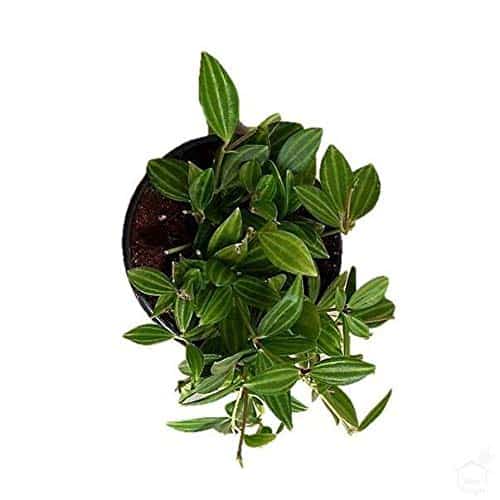
Along with selecting the proper type of soil and a proper plant container, proper watering habits is one of the most important aspects of gardening. This plant is highly susceptible to root rot from overly saturated soil, so it is best to learn how to use the soak and dry method when watering it. It is a very simple method with six steps:
- Set the plant container in the water, but make sure the water isn’t so deep that it will overflow the lip of the container. The point of the soak and dry method is to utilize the drainage holes in the plant container to soak up water from the bottom.
- Let the plant soak up water for fifteen minutes.
- Remove the plant from the water.
- Set the plant in a spot where the excess water can drain from the container’s drainage holes.
If you still need some help watering your plants, try using a plant watering app. Technologies like this are capable of reducing or removing any worries you may have about watering your plants. They are designed to keep track of when you watered your plants, to remind you to water your plants, and to answer questions about your plants. Water without worry.
Parallel Peperomia Light Requirements
Sunlight is another factor that can make or break a garden. If you want to successfully grow every type of plant that you love, learn what amount and type of sunlight each variety needs. Then, utilize either a light meter or a light meter app to ensure your plants are receiving adequate lighting.
Parallel Peperomia plants require bright sunlight that is either filtered by a shade or is indirect. This type of sunlight will provide the plant with the light it requires to grow strong and healthy but it will not dry out its delicate leaves.
Best Parallel Peperomia Fertilizer
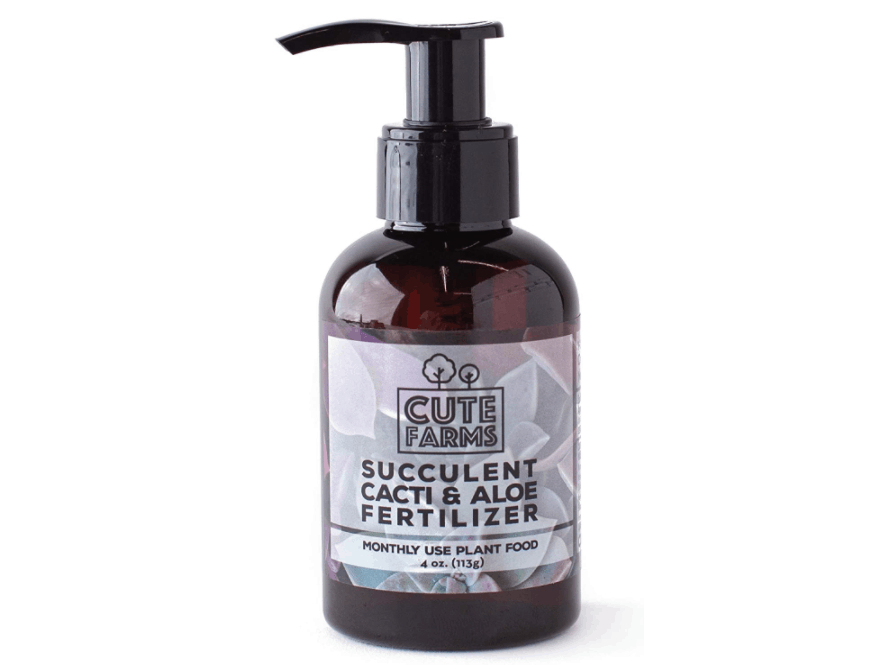
Parallel Peperomia does not need to be fertilized very much or very often, you should only plan to feed it a 50% dosage during spring and summer. Spread out these feedings every 2 to 4 weeks during this time frame.
Try Cute Farms Succulent Cacti & Aloe Fertilizer for this plant.
Best Parallel Peperomia Companion Plantings
Plant companions are one of the best ways to properly care for humidity-loving plants. The idea of plant clustering tropical plants is more than just decorative, it is quality plant care because it provides extra humidity to each of the plants. While it is true that Parallel Peperomia does not need a lot of extra humidity, it does benefit from it.
When considering what types of plants to use as a companion planting for your Parallel Peperomia, keep the following requirements in mind:
- Choose a plant that has similar care requirements, e.g., the same type of soil and watering method
- Choose a plant that will look aesthetically appealing next to your other plant
- Choose a plant that is easy to grow, propagate, and care for
A few examples of plants that will meet these plant companion requirements are:
Peperomia Plants
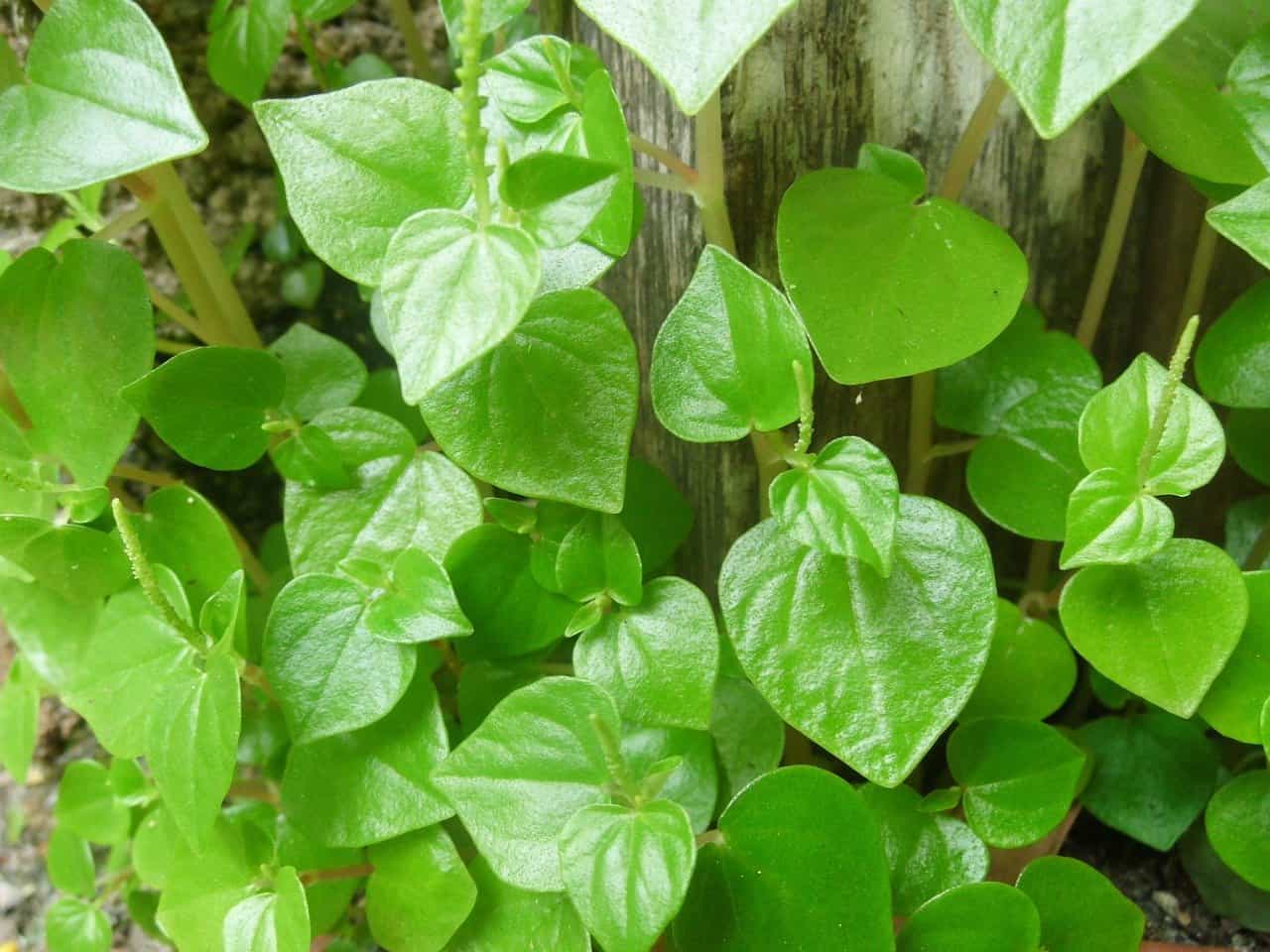
Pros:
- They are from the same family as Parallel Peperomia
- They are typically very easygoing and unfussy
- They come in a wide variety of shapes and colors
- They are not toxic
Cons:
- None
Pilea Glauca
Here is another member of the Pilea plant family that will look beautiful next to your Parallel Peperomia. It has a lot in common with Peperomia plants which will make gardening them together with a breeze.
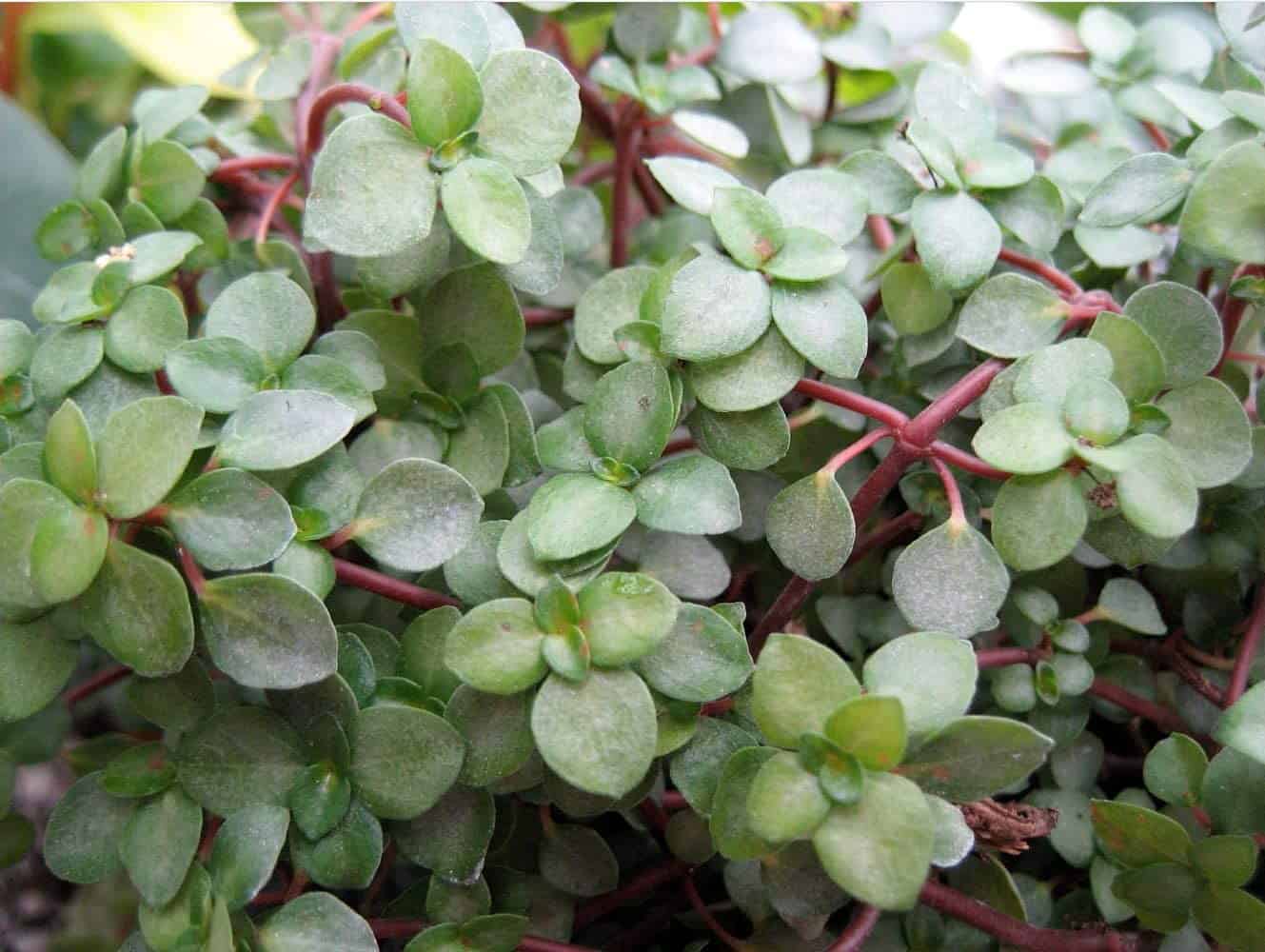
Pros:
- Pilea Glauca can reproduce itself through pups
- Pilea Glauca requires the same temperatures and humidity levels that Parallel Peperomia does
- Pilea Glauca is not toxic
- Pilea Glauca can purify indoor air
Cons:
- Pilea Glauca is not cold hardy
- Pilea Glauca is susceptible to aphids, mealybugs, and spider mites
Jade Pothos
All varieties of Pothos plants are elegant and easygoing, but Jade Pothos delivers even more with its extraordinarily green-colored leaves. This tropical plant is well suited for sharing humidity and complementing the good looks of other plants.
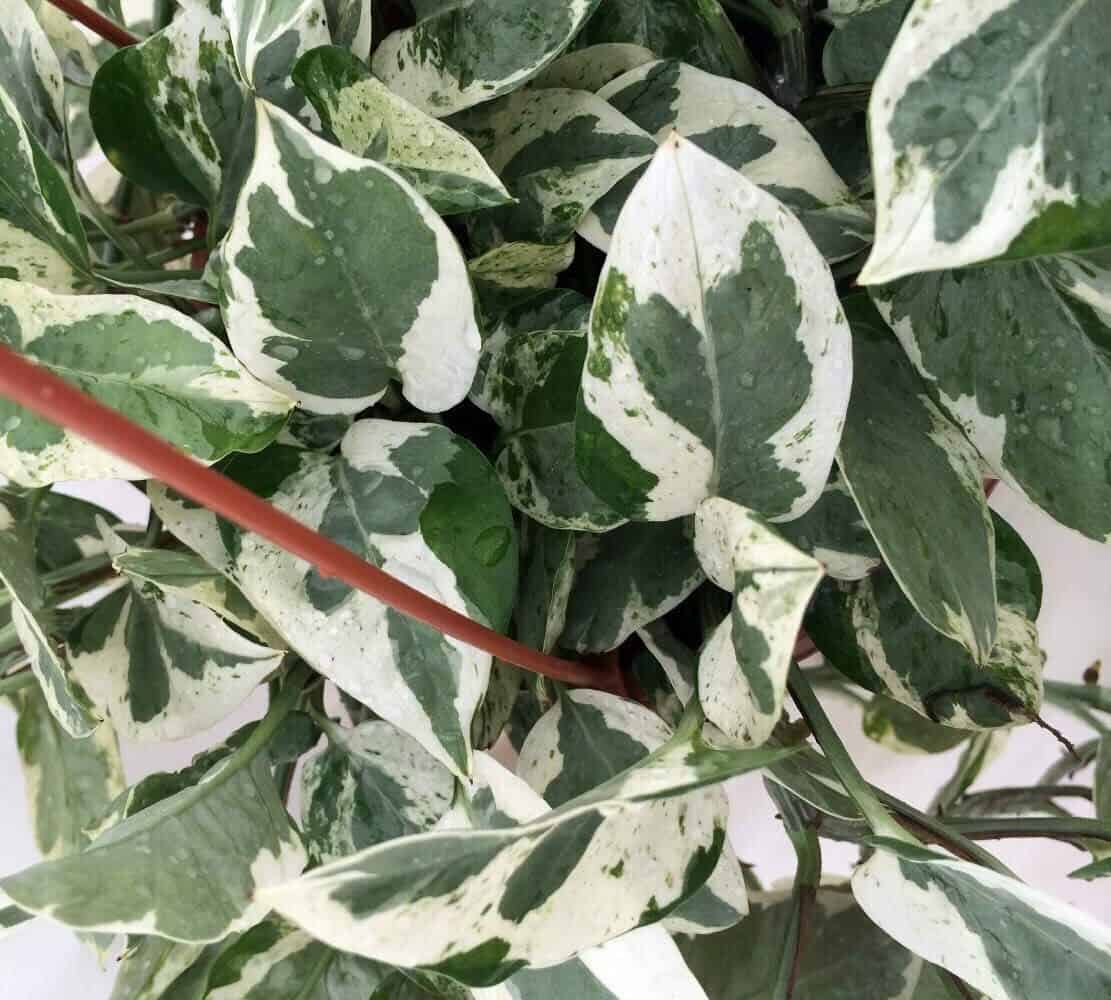
Pros:
- Jade Pothos is a beautiful plant
- Jade Pothos is very easy to care for
Cons:
- Jade Pothos is toxic
Parallel Peperomia Diseases and Common Problems
Here is a list of the most common issues faced by these plants. In this list is information on how to identify and treat each issue.
Mealybugs
Evidence of an infestation of mealybugs is small white spots that look like cotton on leaves and stems. To deal with an infestation of mealybugs, follow these steps:
- Spray a solution of alcohol and water on the leaves
- Rub the leaves with a cotton ball
- Coat the leaves in neem oil or insecticidal soap every few days
Root Rot
This is caused by overwatering a plant. If you learn how to properly water your plants, they should not get root rot. If, however, you are suspicious that your plant is suffering from this, look for these symptoms:
- Stems and leaves that are black
- Stems and leaves that are translucent
- Stems and leaves that are mushy
- Leaves that are dropping off regularly
A plant that is suffering from root rot should be allowed to dry out for a few days or weeks. There’s no need to water the plant during this time. Do trim off leaves and stems that are black, translucent, and mushy. If drying out the plant does not work, it may be best to replace the plant’s soil altogether.
Spider mites
Evidence of a spider mite infestation will show up as webbing on the leaves and stems. Sometimes the tiny insects will even be visible crawling around the plant. To treat this type of infestation, fill a spray bottle with a quart of warm water, 1 tsp. of dish soap, and 2 tsps. Of neem oil. Use this mixture to spray and wipe the leaves and stems of the plant clean. It may be necessary to repeat this process several times to rid the plant of all the insects.
Yellowing Leaves
Figuring out what is causing the leaves of a plant to turn yellow will be a process of elimination. It could be caused by any of the following:
- Excessive sunlight
- Too little or too much water
- Nitrogen deficiency
Parallel Peperomia Treatments and Maintenance
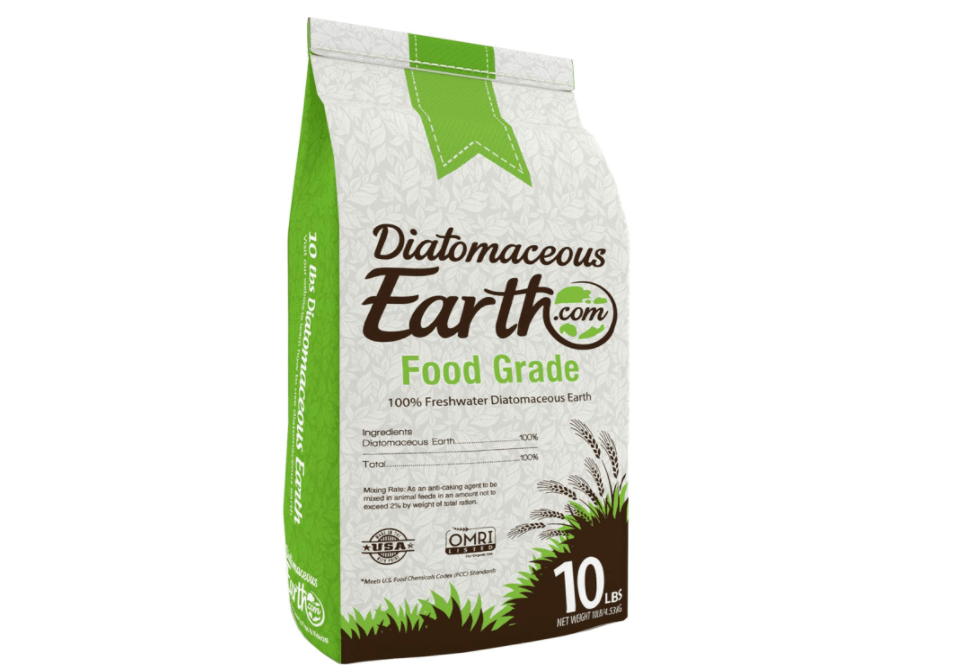
Remember, prevention is better than treatment. With that in mind, take some time to learn about each of your plants, what sort of diseases and pest infestations they face and how you can best treat and prevent those. Here are few tips to help keep your plants healthy and disease-free:
- Treat diseases and infestations quickly.
- Schedule routine inspections to look for signs of disease and pest infestations.
- Regularly clean the plant’s leaves with neem oil.
- Properly water and feed your plant.
- Provide your plant with adequate amounts of sunlight, heat, and humidity.
- Mix diatomaceous earth into the soil of potted plants.
Where to Buy Parallel Peperomia Seeds Online
Since Peperomia seeds are difficult to find, it will require a little effort to search for them. If you are interested in purchasing these seeds, then start with these online shops:
Where to Buy Mature Parallel Peperomia Online
Woodies Garden Goods is a fabulous online shop for plant lovers. Find your newest plant family addition there.
FAQs
Question: How Large Will My Peperomia Puteolata Grow?
Answer: This is a compact plant but it does grow vining stems. These stems typically get up to 18 inches long.
Question: Should I Prune My Peperomia Puteolata?
Answer: Yes, this plant should be pruned regularly. Pruning will prevent long leggy stems and it offers a great opportunity to propagate new plants.
Question: Does Peperomia Puteolata Produce Flowers?
Answer: Yes, but they are not very large or showy. Most gardeners do not grow this plant for the flowers, but rather, for the striped leaves and easygoing nature of the plant.
In Conclusion
Peperomia Puteolata is a dream plant. It is cute, it is easy to propagate, and it is easy to grow. With just a little love it will make your garden dreams come true.

